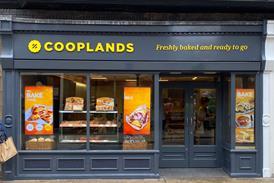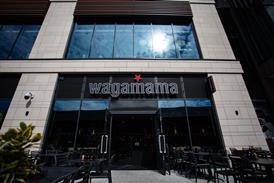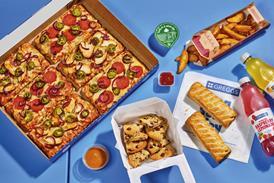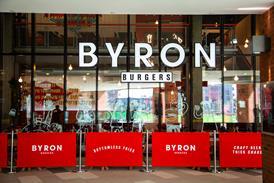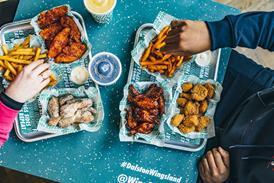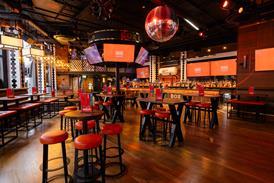As more diners opt for soup and salads in the US, Darren Tristano takes a look at why customers are looking for healthy main-meal options, but also require them to be comforting, unique and filling
In the US, soup and salad consumption is on the rise as consumers aim for more balanced and healthy diets. Data from Technomic’s 2016 Left Side of the Menu: Soup & Salad Consumer Trend Report indicates areas of opportunity for both soup and salad menu items. Soup remains a comfort food for consumers, but they are looking to restaurants to offer unique twists on classic items. Patrons are also interested in customising their soups and salads with a variety of bases and toppings, emphasising the need for restaurants to offer healthy, filling options with substantial flavour.
When it comes to soups and salads, consumers continue to demand options that are familiar, but that have unique twists. Operators will need to find a balance between incorporating unique ingredients and offering menu items that are still approachable. Restaurants can do this by adjusting and emphasising one specific ingredient, such as spätzle in place of noodles in soup or seasoned artisan croutons on salads. Panera Bread recently returned its Bistro French Onion Soup to its winter menu; the classic soup features a savoury broth with sherry vinegar gastrique and sea salt and is topped with Gruyère and black pepper focaccia croutons.
With their flexible flavour profiles and comforting textures, classic soups like tomato and cheese-based soups are proliferating on Top 500 chain restaurant menus. Tomato soup menu incidence at limited-service chains has grown 39% during the past two years and mentions of tomato and cheese as ingredients in soups at these restaurants have also increased 23% and 21%, respectively, in two years. These soups provide familiar platforms for differentiating ingredients such as Sriracha, ancho chillies (pictured left), or a locally sourced craft beer. In fact, more than a quarter (27%) of 18 to 34-year-old men say they would be very interested in ordering a beer or ale soup from a restaurant. Fleming’s Prime Steakhouse & Wine Bar recently offered Smoked Cheddar and Gruyère Soup infused with Stella Artois on its limited-time Taste the Season menu.
The tame flavour profile and creamy consistency of tomato and cheese-based soups also make them ideal for dipping. For this reason, we expect “dip-able” pairings and promotions, particularly with grilled cheese and panini sandwiches. Ram Restaurant & Brewery has already tried this on its autumn menu; Soup Dogg featured an amber-ale beer-cheese soup served with a pretzel-wrapped hot dog for dipping.
A leading deterrent of soup and salad purchases is lack of variety. Operators will need to broaden their menu options to offer unique experiences; possible strategies include offering more customisable items, adding more vegan or vegetarian soups and salads, and differentiating with ethnic flavours.
Customers increasingly want the ability to tailor ingredients to their flavour and health preferences. About half of consumers say it’s important to be able to customise (55%) or build their own (46%) salad. A build-your-own salad bar – one with frequently prepared meats, healthy grains and home-made dressings – and premium soup toppings would allow for both customisation and variety. Also trending are build-your-own flex-format salad concepts where guests can turn salads into rice bowls, wraps or sandwiches and vice versa. Most of these concepts – including Freshii, Roti Mediterranean Grill and Naansense – are fast casuals, but their influence will spread to other segments, particularly quick-service and casual-dining. We expect more quick-service chains to offer a variety of salad greens, toppings and dressings to choose from, and more casual-dining chains will launch flex-format bowls and sandwiches.
Consumers are increasingly willing to pay more for soups that are vegan, and many prefer at least one vegetarian soup on the menu. A vegetarian or vegan option could reduce the veto vote and potentially raise cheque averages as these diets grow in popularity. One example is mid-scale chain Bakers Square’s recently added Vegetarian Black Bean Soup.
Ethnic soups could differentiate and stir interest among younger consumers because many of these varieties are viewed as comforting, craveable and filling. Asian soups in particular are trending as mains; almost 40% of consumers say they would consider ordering Asian-style soup, such as ramen, Vietnamese pho, miso soup or Thai coconut-curry soup. These options have exploded on independent restaurant menus during the past two years, particularly ramen (up 33%) and pho (up 17%).
Asian-style soups are also appearing on chain restaurant menus. Last month, Panera Bread added a Thai Garden Chicken Wonton bowl featuring ginger-chicken wontons, broccoli, spinach, napa cabbage blend, roasted mushroom and onion blend, Thai chilli vinaigrette, coriander and sesame seeds in chicken broth.
Quick-service chain Crazy Bowls & Wraps also recently added an Asian-inspired soup to its menu; the soup fea-tures kale, quinoa, edamame, garbanzo beans, avocado, tomato and crispy noodles in an Asian broth.
Soups and salads are viewed as lighter, better-for-you fare, but consumers are looking for satiety and appealing taste, indicating a need for more substantial, flavourful options. A third of 18 to 34-year-old consumers (34%) say they are interested in trying more grain-based salads that feature ingredients such as quinoa, wheat berries and farro.
These consumers may also be motivated by dietary needs and restrictions; many of these grains are naturally gluten-free and rich in protein and fibre. Adding more starches, grains, lean meats, beans, nuts and servings of vegetables to soups and salads maintains healthiness while increasing heartiness and value. Marketing current and future soup and salad offerings as filling and flavoursome could grab the attention of younger consumers who are more likely to eat these foods as a main dish.
In the 2014 Soup & Salad Consumer Trend Report, we called out grain-based salads as a growing trend to watch; these salads have now proliferated both limited -service restaurant and full-service restaurants chain menus. Some examples of these items on menus include the Warm Autumn Grain Bowl, featured on the fall menu at Le Pain Quotidien, with quinoa and farro, roasted Brussels sprouts, butternut squash, kale, arugula, spiced pecans and goat cheese. Also in autumn, Wendy’s tested a Power Mediterranean Chicken Salad with sun-dried tomato quinoa and mixed lettuces.
Looking ahead, we expect to see more sprouted grains, ancient grains and little-known superfood grains like teff, freekeh, kamut and fonio appear on top chain restaurant menus.
Menu development must focus on flavour differentiation. Operators will likely turn to more extensive ingredient options and customisation for salads, while integrating Asian flavours into soups to spur turnover. But operators and suppliers would be wise not to stray too far from soup’s familiar, comfort-food positioning and salad’s status as straightforward and healthy.
Darren Tristano is president at Technomic Inc, a Chicago-based foodservice consultancy and research firm owned by Winsight. Since 1993, he has led the development of Technomic’s Information Services division and directed multiple aspects of the firm’s operations.


